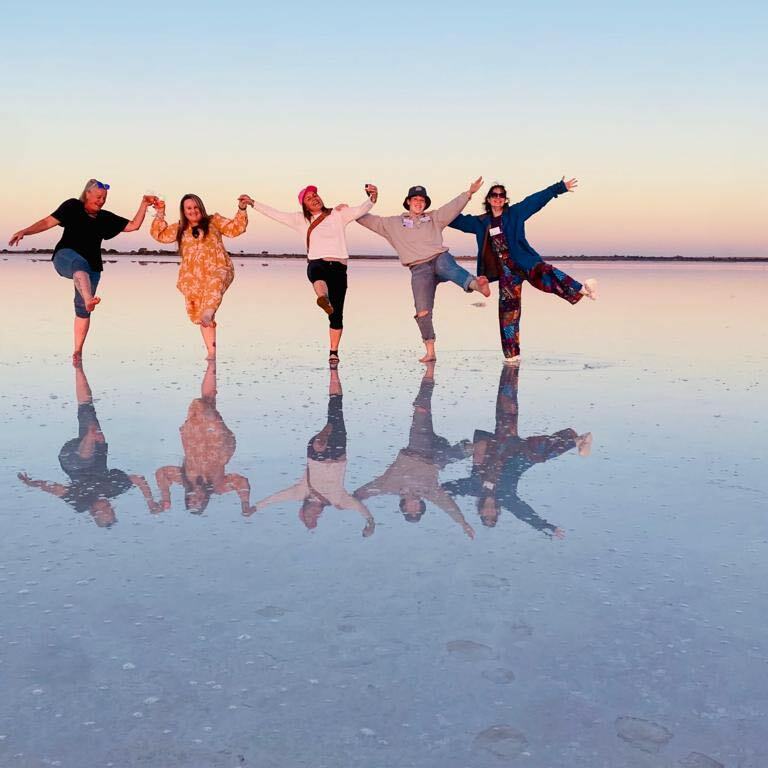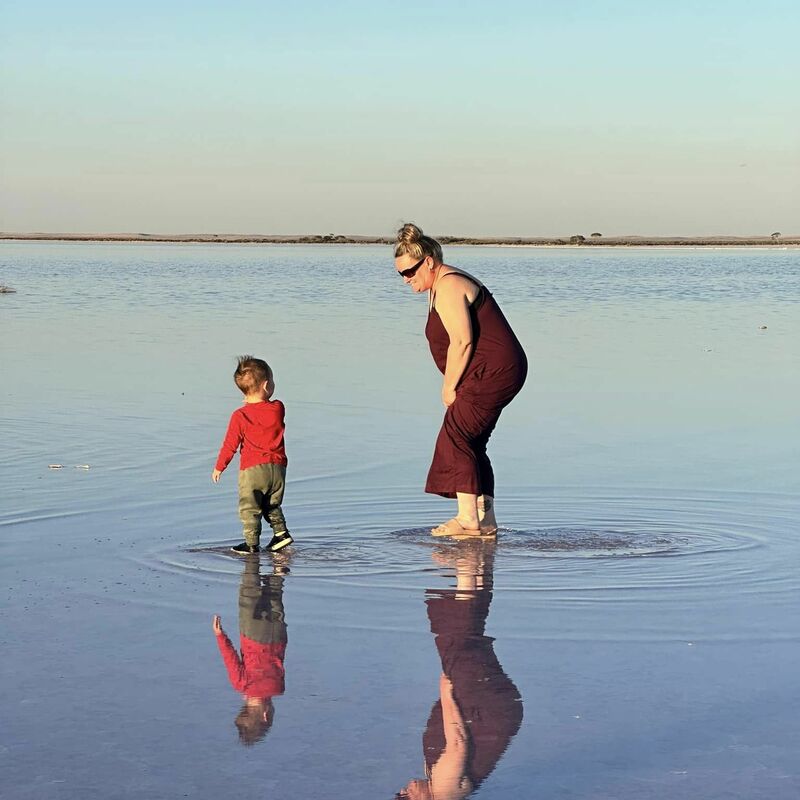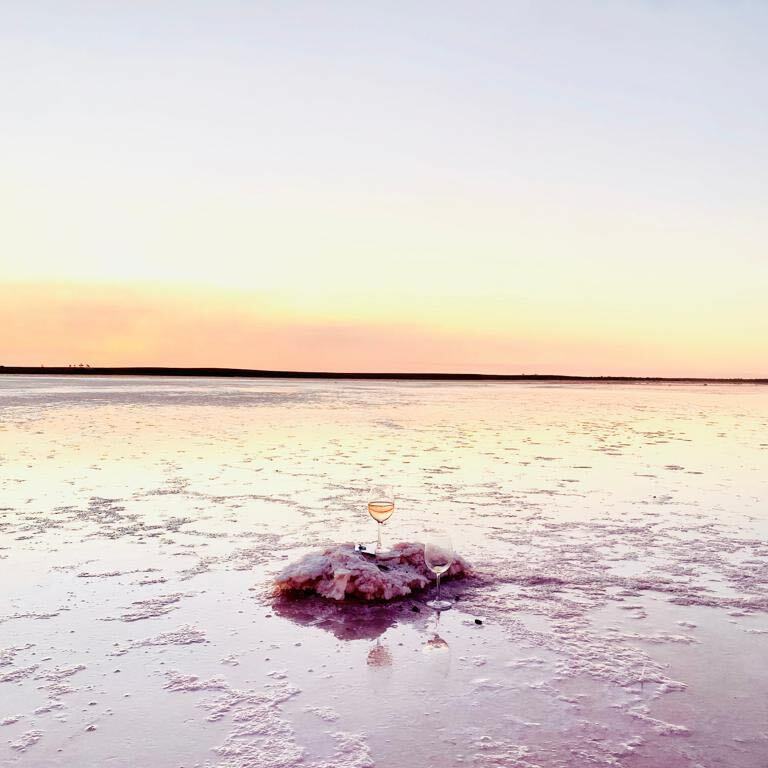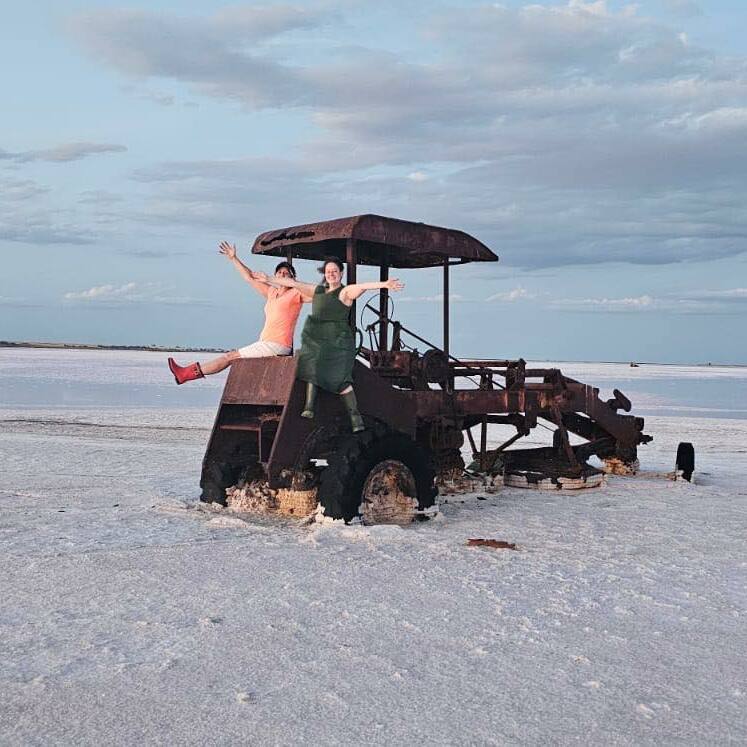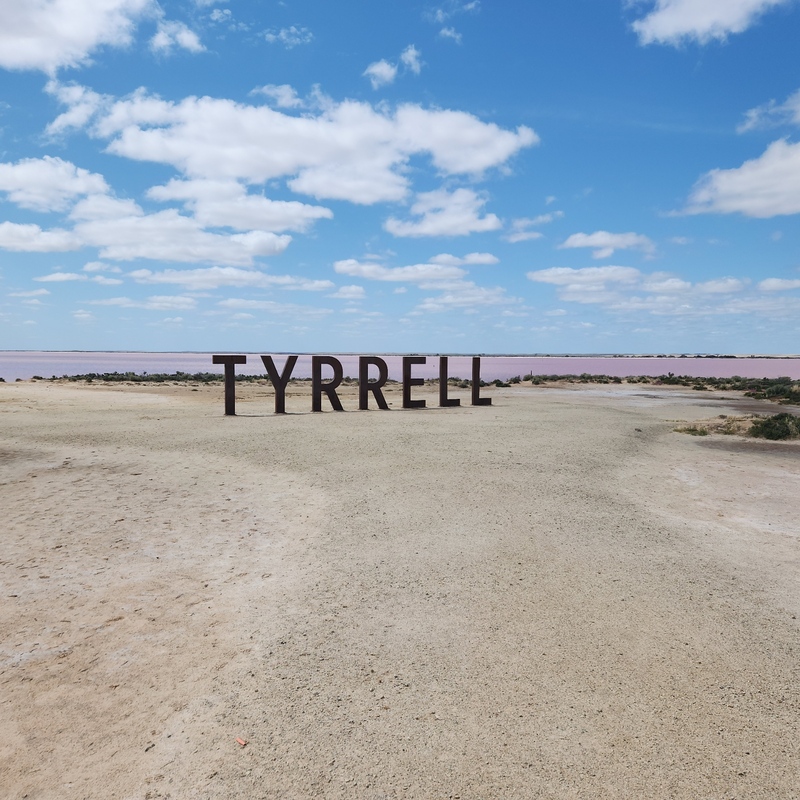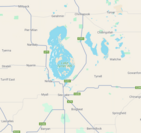
Lake Tyrrell is a shallow, salt-crusted depression in the Mallee district of north-west Victoria, in Australia. The name 'Tyrrell' is derived from the local Wergaia word for 'sky', the Boorong Aboriginal people of the area being distinguished for their interest in star-lore.
The Boorong, with their astronomical traditions, told stories connected with constellations in the night sky.
The lake covers approximately 20,860 hectares (51,500 acres), making it Victoria's largest salt lake. It is located 6 km north of the town of Sea Lake and 314 km northwest of Melbourne.
While much of the time the lake is dry, it is usually covered in about 5 cm of water in winter. It is ancient, and probably formed by sand blocking the passage of Tyrrell Creek, a distributary of the Avoca River, which feeds the lake. Evaporation results in a layer of salt crusting on the lake bed, which is harvested by Cheetham Salt in Sea Lake.
The lake environment is host to Mallee reptiles, kangaroos, emus, and the white-fronted chat, an insectivorous bird. Thousands of seagulls breed on small islands on the lake. Surrounding vegetation is made up of saltbush and samphire, which supports a range of wildlife. To the east, the lunette contains significant Aboriginal relics.
